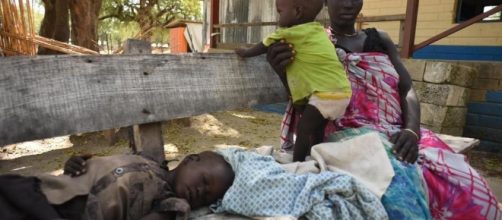The Sudanese Government announced on Monday that famine was raging in several parts of the country, while food security for half of the population could be threatened by July 2017. For the first time, starvation has affected several areas of South Sudan, which have been independent since 2011 and have been ravaged by war for over three years, while nearly half of the country's population requires food assistance.
Economic crisis:
Several areas in the Unity region (north) are now "classified as starving ... or running the risk of starvation," Isaiah Chol Aruai, chairman of the National Bureau of Statistics Sud-Sudan, at a press conference.
Its figures are based on the IPC scale, the most used standard, notably by the United Nations, to classify food security.
"The long-term effects of the conflict, coupled with high food prices, the economic crisis, reduced agricultural production and reduced access to livelihoods" mean that 4.9 million South Sudanese ( Out of a total population of 11 million) are now classified in the top three levels of the CPI scale, with the highest famine. This number is expected to increase to 5.5 million by July.
100,000 people are at risk of starvation
In recent years, several reports have indicated that tens of thousands of South Sudanese may be classified as "disaster/famine", but this proportion of the population was too low to declare a region to be in a state of famine.
On Monday, three UN organizations, the Children's Fund (UNICEF), the Food and Agriculture Organization (FAO) and the World Food Program (WFP), said that 100,000 people in the region May starve to death without emergency assistance.
"The biggest tragedy of the report released today is that the problem was caused by man," said Eugene Owusu, UN Humanitarian Coordinator for South Sudan.
Independent since 2011, South Sudan has plunged into civil war in December 2013, killing tens of thousands and displacing more than 3 million people, despite the deployment of some 12,000 peacekeepers.

